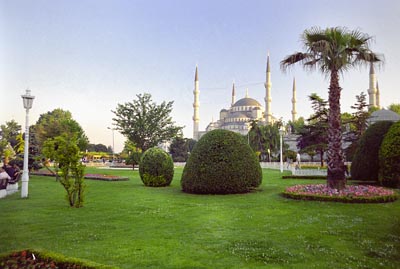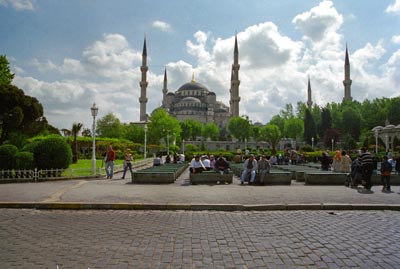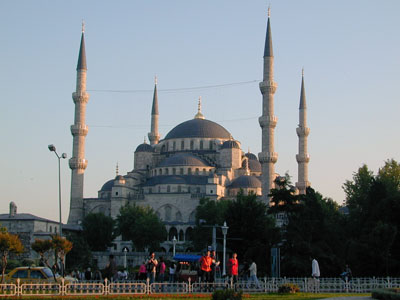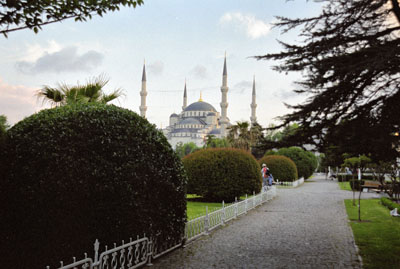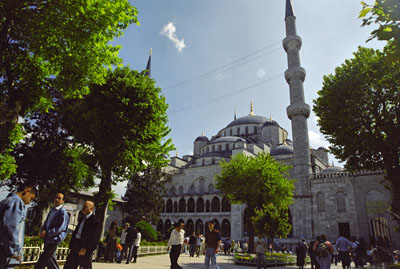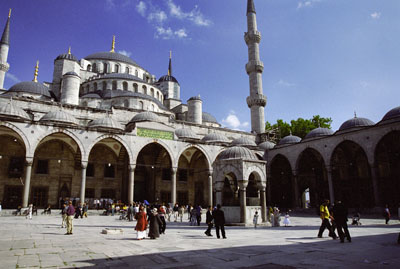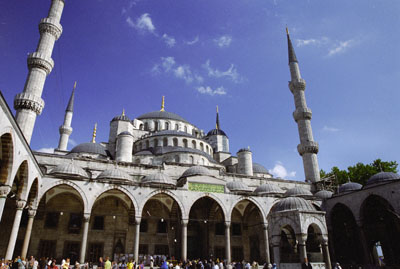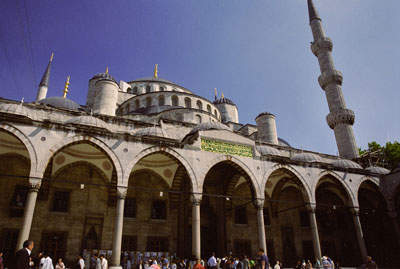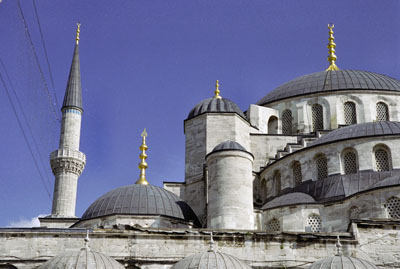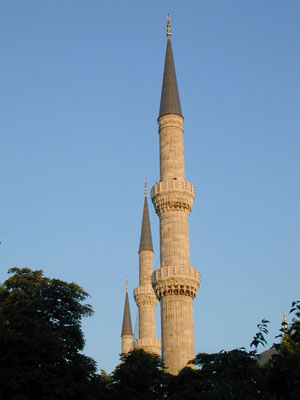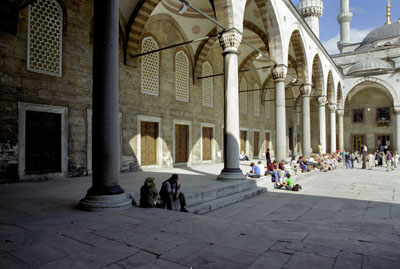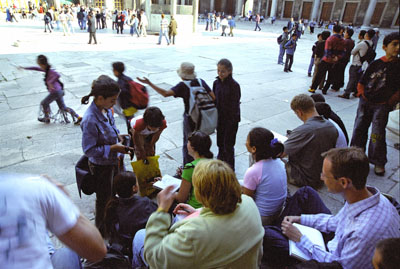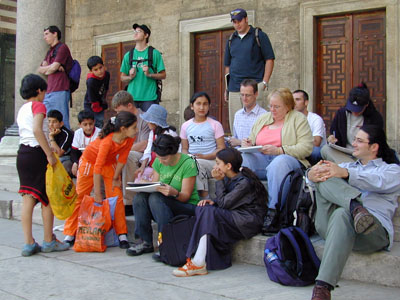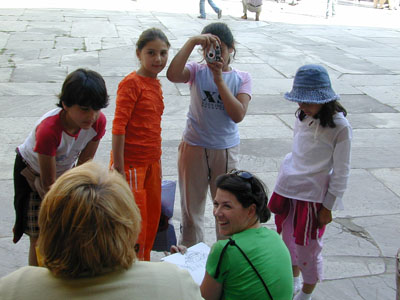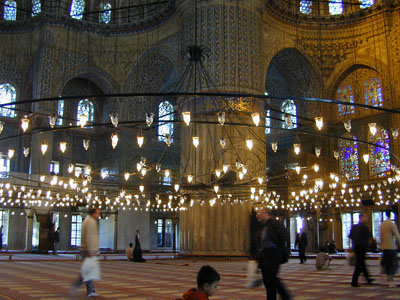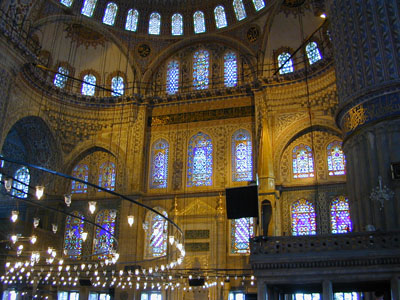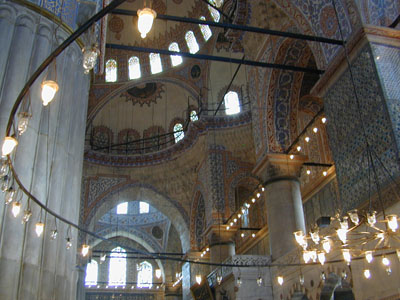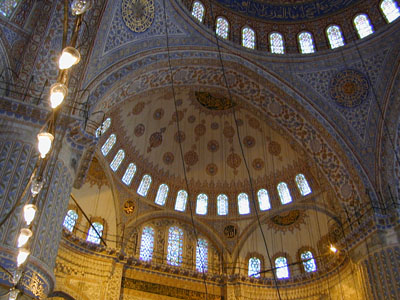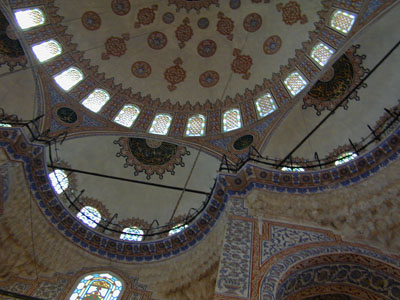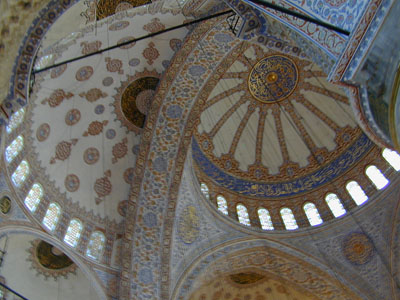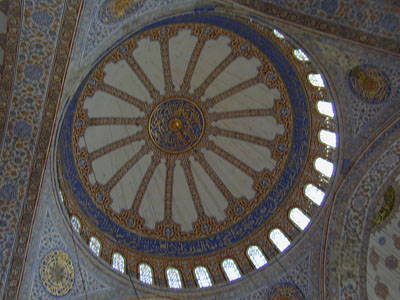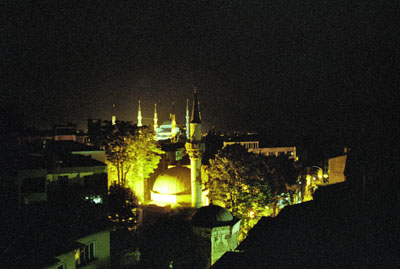Originally known as Sultanahmet Cami, the Blue Mosque got its nickname from the 21,000 blue tiles that adorn its interior. It was designed by Sedefhar Mehmet Aga for the Sultan Ahmet I. Completed in 1616, The Blue Mosque was designed specifically to compete with the nearby Hagia Sophia in splendor. Hagia Sophia (arguably the most important mosque in Istanbul at the time) was originally a Christian church. I imagine this fact was not lost on the architect of the Blue Mosque.
Aga was a pupil of the great architect Mimar Sinan and apparently learned well from his master. Sultanahmet Cami is widely regarded as one of the most impressive mosques of the Islamic word. 6 minarets, 260 stained glass windows and a dome that is 43 meters high. That's 141' to you and me. It is a Turkish World Heritage site.
Ahmet had six minarets installed in his shiny new mosque, a scandalous move at the time since the holiest mosque in Islam - the Haram Mosque in Mecca - also had six. The problem was solved by adding a seventh minaret to the mosque in Mecca (at the Sultan's expense of course). The Sultan was a young man, only 19 when he took the throne. Sadly - he only lived long enough to enjoy his commission for about a year, dying at the age of 27. He is interred on the grounds with his immediate family. Though popular with visitors, it is an active mosque so while western attire is mostly acceptable in the courtyard, if you actually enter the mosque: no shoes, no shorts, covered arms (that includes men), covered hair (for women) and use your indoor voice.
All photos on this page are originals by & copyrighted by Daren Willden, unless otherwise stated. All rights reserved.
